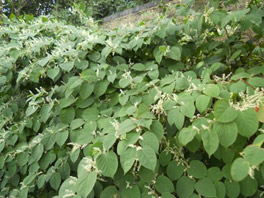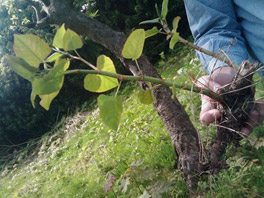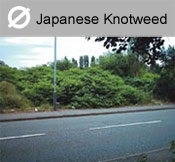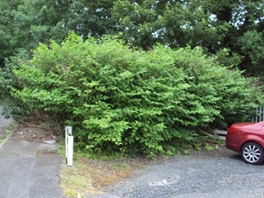 |
||||||||||||
|
Japanese knotweed - The Facts At the current time (summer 2012) the presence of even a small amount of Japanese knotweed perhaps several metres away from a property renders it a 'risk'. The weed is making it virtually impossible for properties to be mortgaged, leaving the industry and some homeowners in a state of panic.
Although Japanese knotweed does have to potential the to cause damage to buildings it is not a problem that can't be solved when handled correctly. It is understandable that the prospect of finding the weed on your property must be worrying; however once you can understand the ways to handle it, the plant immediately seems less intimidating.
At Prospect Materials we have had over 12 years experience and invested heavily in research and development to eradicate the species. With this record we would like to think we are able help to inform and reassure people that there are ways to overcome the issue of Japanese knotweed. With this in mind we have created a simple fact sheet using our expertise for those who encounter the species.
 
 'Japanese knotweed can grow through walls'
Japanese knotweed has the ability to work its way through gaps in between bricks and stone and not the brick itself. It is a tough plant and whilst it is true that it has the potential to damage buildings, typically it is usually only those of older construction such as random stone and soft lime mortar. The plant will exploit the weakness in any construction.
In over 10 years of eradicating Japanese knot weed infestations Prospect Materials have yet come across an incident of a modern house or even an older property (that has not been allowed to become derelict), damaged by the plant.
 
'Japanese knotweed can't be killed'
Although not the easiest species to eradicate, it is possible using various methods to remove the plant completely. The length of time it can take and the costs involved are what give people the impression it is an impossible task, along with the fact people can't kill the plant using off the shelf products. Prospect Materials have the expertise to offer removal in a single season and have developed methods to reduce costs and effectively kill the weed.
Facts
Although these facts can make removal of the weed seem daunting it is possible to control. Unless the infestation is within 7 metres of any building it is highly unlikely to cause any problems whatsoever to the construction or its foundations. There are a variety of solutions at varying costs and timescales that can be used to clear a property of the weed and by using an expert offering a guarantee, there is no reason why a mortgage should be refused due to a 'risk' that is minimal.
To summarise, the potential for damage to existing properties is grossly exaggerated. Certainly, if left to its own devices it has the potential, in common with many other plants, to cause serious structural damage. If there is no structural damage apparent at the time of inspection there is no cause for immediate concern, always providing that an appropriate control methodology is implemented.
|
|||||||||||
|
||||||||||||









